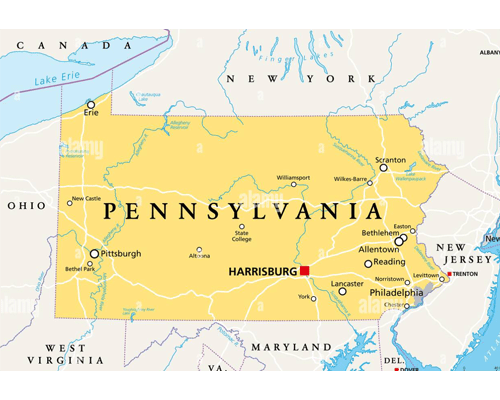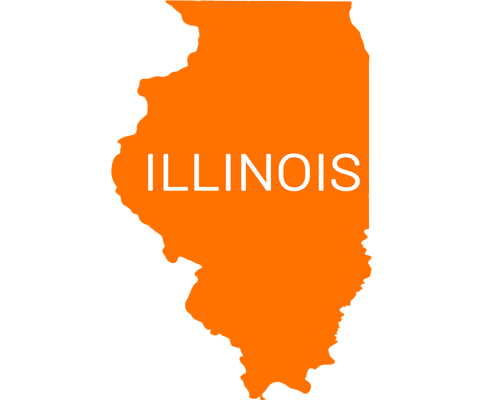Whitetail deer populations in the United States have returned to the level of common estimates for the pre-colonization period. However, mule deer and blacktail deer are well below recent peaks and pre-colonization estimates.
The total United States deer population in 2021 was about 35.4 million, up from a recent low of 32.2 million in 2014. This is down from the recent peak in 2000 of 38.1 million deer.

The whitetail population fell from about 33.5 million in 2000 to 28.6 million in 2014 but has since recovered to about 31.7 million in 2021. However, the whitetail range has significantly expanded to the north and west in the past hundred years, so a lower deer density results in the same total number of deer.
In conclusion, whitetail deer populations in the United States are generally healthy, but mule deer and blacktail deer populations are still recovering from past declines.
Related Post:- Best Tree Stand
Related Post:- Best Deer Hoist
1. Wisconsin

- Public land for hunting: 1.5 million acres
- Estimated deer population: 1.2 million
- Number of deer hunters: 350,000
This Chequamegon-Nicolet National Forest is located in the northeastern part of Wisconsin and is the largest national forest in the state. The forest covers an area of over 1.5 million acres and is home to a variety of terrain, including forests, marshes, and lakes. The forest also has a large deer population, estimated to be around 1.2 million. The deer population in the Chequamegon-Nicolet National Forest is relatively stable, with a good mix of bucks and does. The forest is a popular spot for deer hunting, and there are a variety of hunting opportunities available, including archery, rifle, and muzzleloader hunting.
2. Pennsylvania

- Public land for hunting: 750,000 acres
- Estimated deer population: 750,000
- Number of deer hunters: 250,000
This Susquehannock State Forest is located in the central part of Pennsylvania and is the largest state forest in the state. The forest covers an area of over 750,000 acres and is home to a variety of terrain, including forests, mountains, and valleys. The forest also has a large deer population, estimated to be around 750,000. The deer population in the Susquehannock State Forest is relatively stable, with a good mix of bucks and does. The forest is a popular spot for deer hunting, and there are a variety of hunting opportunities available, including archery, rifle, and muzzleloader hunting.
3. South Dakota

- Public land for hunting: 1.2 million acres
- Estimated deer population: 600,000
- Number of deer hunters: 150,000
This Black Hills National Forest is located in the western part of South Dakota and is home to a variety of terrain, including forests, mountains, and grasslands. The forest also has a large deer population, estimated to be around 600,000. The deer population in the Black Hills National Forest is relatively stable, with a good mix of bucks and does. The forest is a popular spot for deer hunting, and there are a variety of hunting opportunities available, including archery, rifle, and muzzleloader hunting. The Black Hills National Forest is also known for its trophy bucks, and many hunters come to the forest in hopes of taking a big buck.
4. Washington

- Public land for hunting: 500,000 acres
- Estimated deer population: 500,000
- Number of deer hunters: 100,000
This Okanogan-Wenatchee National Forest is located in the northeastern part of Washington and is home to a variety of terrain, including forests, mountains, and rivers. The forest also has a large deer population, estimated to be around 500,000. The deer population in the Okanogan-Wenatchee National Forest is relatively stable, with a good mix of bucks and does. The forest is a popular spot for deer hunting, and there are a variety of hunting opportunities available, including archery, rifle, and muzzleloader hunting.
5. Virginia

- Public land for hunting: 400,000 acres
- Estimated deer population: 400,000
- Number of deer hunters: 100,000
This Chesterfield National Forest is located in the southern part of Virginia and is home to a variety of terrain, including forests, mountains, and farmland. The forest also has a large deer population, estimated to be around 400,000. The deer population in the Chesterfield National Forest is relatively stable, with a good mix of bucks and does. The forest is a popular spot for deer hunting, and there are a variety of hunting opportunities available, including archery, rifle, and muzzleloader hunting.
6. Michigan

- Public land for hunting: 30 million acres
- Estimated deer population: 1.3 million
- Number of deer hunters: 345,000
Michigan is home to a large deer population, estimated to be around 1.3 million. The deer population in Michigan is relatively stable, with a good mix of bucks and does. The state has a lot of public land available for hunting, which gives hunters more options for where to hunt. The regulations for deer hunting in Michigan are relatively liberal, which makes it easier for hunters to get a permit and go hunting. The weather in Michigan is generally good for deer hunting, with mild winters and cool summers. The state is relatively easy to get to, with good road and transportation infrastructure.
7. Illinois

- Public land for hunting: 698,000 acres
- Estimated deer population: 640,000
- Number of deer hunters: 255,000
Illinois has a long and storied history of deer hunting. In recent years, some have questioned whether the state’s best days are behind it. However, the harvest of a 327-⅞-inch nontypical buck by Luke Brewster in 2018 silenced the doubters.
Brewster’s buck is the largest hunter-killed nontypical buck in the Boone and Crockett (B&C) record books. It is also the second-largest nontypical buck ever killed, behind a 333-inch buckshot in Wisconsin in 2011.
Brewster’s buck is not the only recent giant to come out of Illinois. The state’s record book is also filled with other recent trophies, including a 304-⅜” nontypical buck shot by Jerry Bryant in 2018 and a 297-inch nontypical buck shot by Mark Wetzel in 2017.
In addition to its recent crop of giants, Illinois also has a rich history of producing world-class deer. The state is home to two world records, a 213-inch typical buck shot by Mel Johnson in 1965 and a 300-inch nontypical buck shot by Brewster and Johnson in 1966.
Illinois has also done a good job of managing its deer population. The state has a comprehensive deer management program that includes hunting, habitat management, and disease control. As a result, Illinois has a healthy deer population that provides excellent hunting opportunities.
Anyone who is looking for a great deer hunting destination should consider Illinois. The state has a long history of producing trophy bucks, and its deer management program ensures that the hunting will be good for years to come.
8. Georgia

- Public land for hunting: 2.7 million acres
- Estimated deer population: 358,000
- Number of deer hunters: 200,000
Georgia has a large deer population, estimated to be around 358,000. The deer population in Georgia is relatively stable, with a good mix of bucks and does. The state has a lot of public land available for hunting, which gives hunters more options for where to hunt. The regulations for deer hunting in Georgia are relatively liberal, which makes it easier for hunters to get a permit and go hunting. The weather in Georgia is generally good for deer hunting, with mild winters and hot summers. The state is relatively easy to get to, with good road and transportation infrastructure.
9. Missouri

- Public land for hunting: 1.7 million acres
- Estimated deer population: 500,000
- Number of deer hunters: 274,000
Missouri has a large deer population, estimated to be around 500,000. The deer population in Missouri is relatively stable, with a good mix of bucks and does. The state has a lot of public land available for hunting, which gives hunters more options for where to hunt. The regulations for deer hunting in Missouri are relatively liberal, which makes it easier for hunters to get a permit and go hunting. The weather in Missouri is generally good for deer hunting, with mild winters and hot summers. The state is relatively easy to get to, with good road and transportation infrastructure.
10. Iowa

- Public land for hunting: 2.4 million acres
- Estimated deer population: 850,000
- Number of deer hunters: 255,000
Iowa has a large deer population, estimated to be around 850,000. The deer population in Iowa is relatively stable, with a good mix of bucks and does. The state has a lot of public land available for hunting, which gives hunters more options for where to hunt. The regulations for deer hunting in Iowa are relatively liberal, which makes it easier for hunters to get a permit and go hunting. The weather in Iowa is generally good for deer hunting, with mild winters and hot summers. The state is relatively easy to get to, with good road and transportation infrastructure.
Conclusion:-
When choosing a deer hunting spot, it is important to consider your own preferences and experience level. If you are a beginner, you may want to choose a spot that is less crowded and has more public land available. If you are an experienced hunter, you may want to choose a spot that has a larger deer population and more challenging terrain.
It is also important to be aware of the regulations for deer hunting in the state you plan to hunt in. These regulations can vary from state to state, so be sure to do your research before you go hunting.

 T-Shirts
T-Shirts Long Sleeves
Long Sleeves Hoodies
Hoodies Sweatshirts
Sweatshirts

 Baby Bodysuits
Baby Bodysuits
 Cap
Cap

